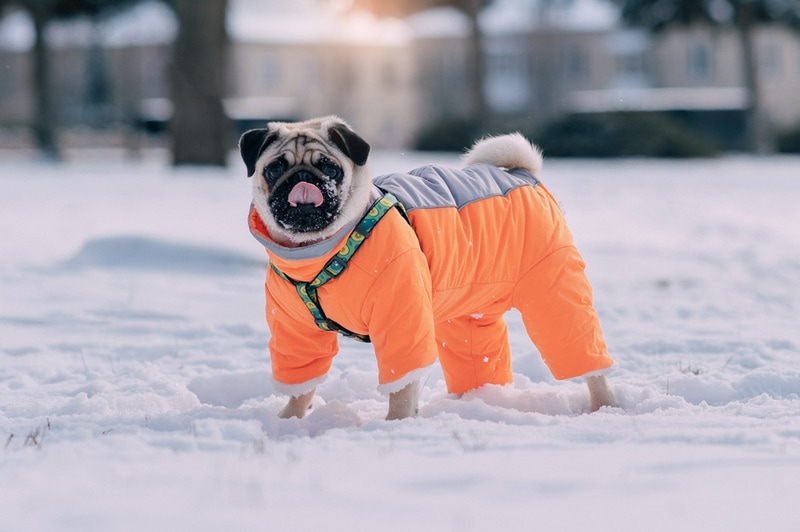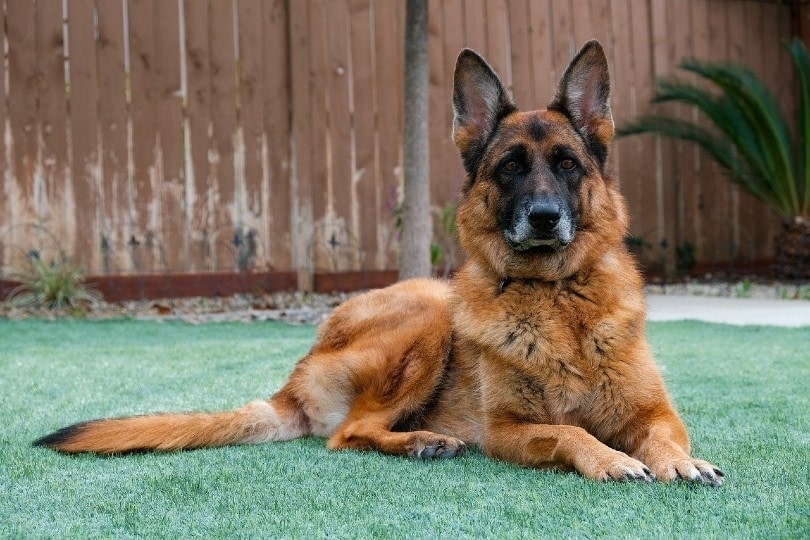Dachshund vs Maltipoo: Which One is Right for Me? (With Pictures)
Updated on
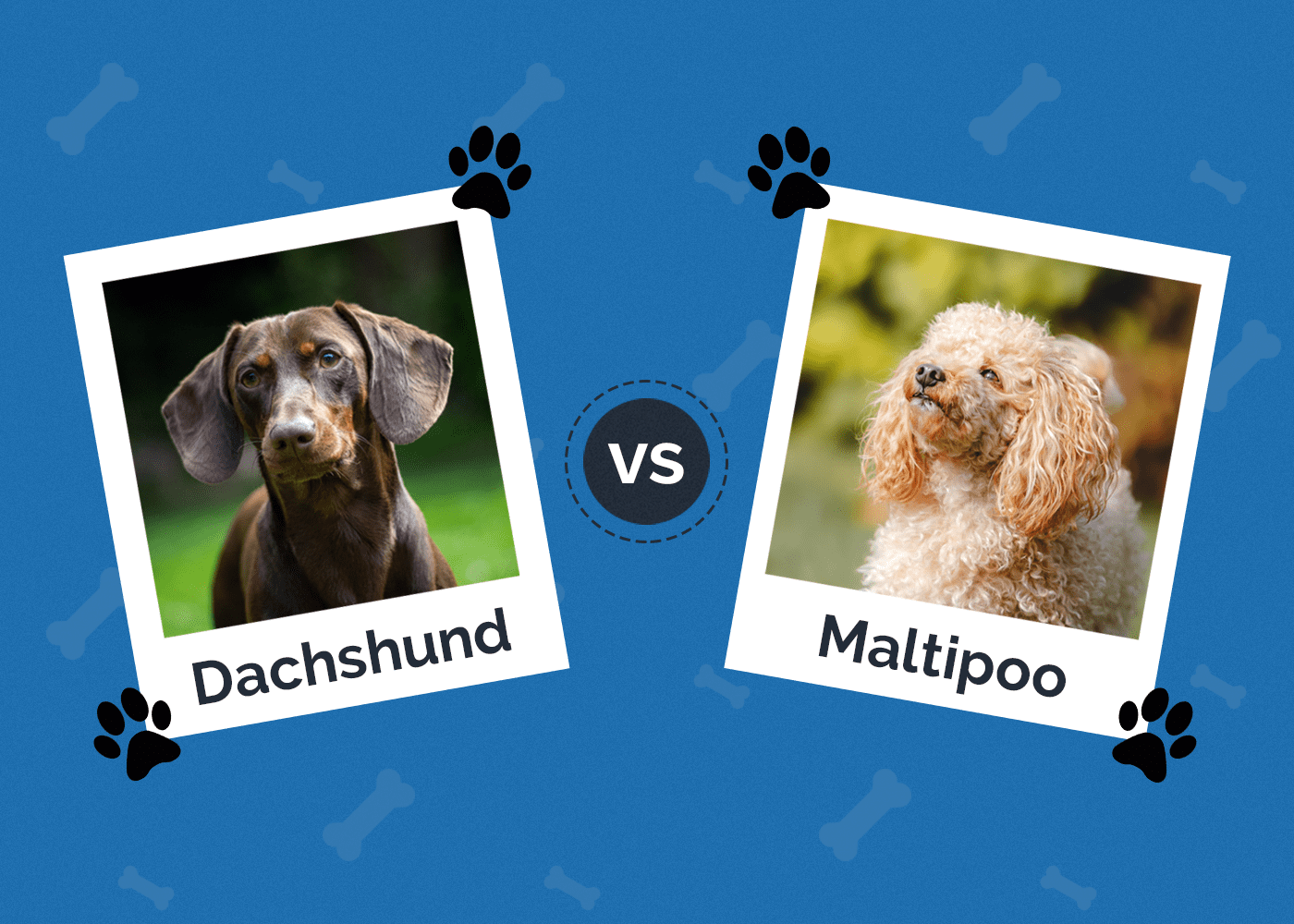
You’ve decided it’s time for a new addition to the family in the form of a cute little canine. You’ve narrowed your choices down to choosing between a Dachshund and Maltipoo. Not an easy choice to make as they are both adorable and have so much to offer as pets.
Fortunately, they have distinct physical and character traits that set them quite apart from one another. In this article, we’ll have a look at the differences between these two diminutive breeds and provide you with the bigger picture. Hopefully, this will make your decision-making process more clear-cut so you’ll know which breed will perfectly fit in with your home and family.
 Visual Differences
Visual Differences

At a Glance
- Average height (adult): 5–11 inches
- Average weight (adult): 8–32 pounds
- Lifespan: 11–15 years
- Exercise: 30+ minutes a day
- Grooming needs: Low
- Family-friendly: Often
- Other pet-friendly: Often
- Trainability: Average, can be stubborn
- Average height (adult): 5–15 inches
- Average weight (adult): 4–25 pounds
- Lifespan: 9–13 years
- Exercise: 30+ minutes a day
- Grooming needs: Moderate
- Family-friendly: Yes
- Other pet-friendly: Yes
- Trainability: High
 Dachshund Overview
Dachshund Overview
The doxie or sausage dog, as it is affectionately nicknamed, is an old dog breed that originated in Germany in the 1500s. They were purpose-bred with short legs to be useful hunting dogs that could go into holes to chase after small burrowing animals such as hares, badgers, and the like.
Miniature and standard sizes are recognized by the AKC. Both sizes can exhibit any one of the three coat types, namely smooth-haired (most common), long-haired, and wire-haired. They can be almost any solid or multi-color under the sun, but certain colors are more likely to be observed in particular coat types. For example, the short-haired doxie is often black and tan or brown.
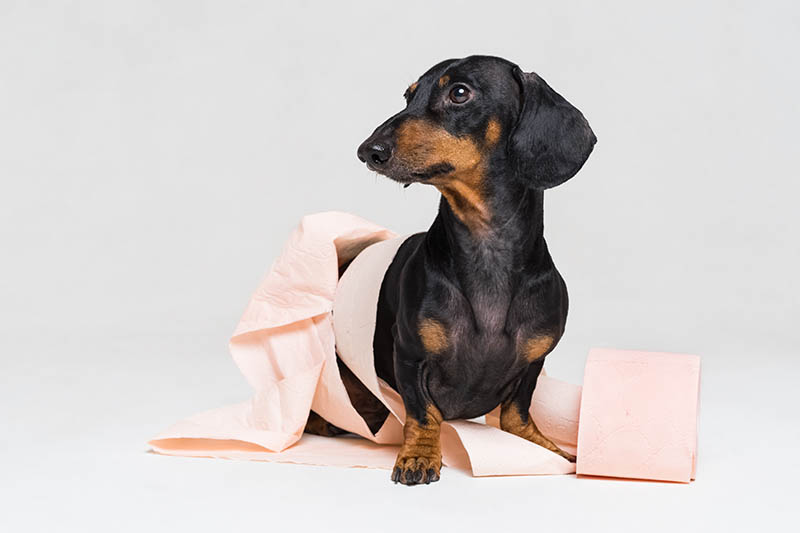
Personality / Character
Regardless of size or coat type, Dachshunds have most of their character traits in common. They are tenacious little dogs with huge personalities—the stereotypical little dog that thinks it’s a big dog. They are clever, lively, and loyal to their chosen human(s). Stemming from their breeding as hunting dogs, they are also exceptionally courageous and very playful.
Although they are devoted to their owner, they don’t always take kindly to strangers and may take some time to warm up to visitors. They are noted for having firm boundaries and letting humans and other animals know when they have been overstepped, often vocally. For this reason, they may exhibit aggressive or snappy behavior, though it rarely evolves into anything more serious.
Training & Exercise
Doxies tend to be stubborn and, for this reason, they can sometimes be difficult to train. They are smart little hounds, so it is certainly possible to train them to a high level—you just need to be patient and pick your moments carefully!
Despite their working dog history and breeding, they don’t require a huge amount of daily exercise, 30 minutes a day is sufficient. They are active little doggies though, and would do just as well with a very active lifestyle (within their physical limits).
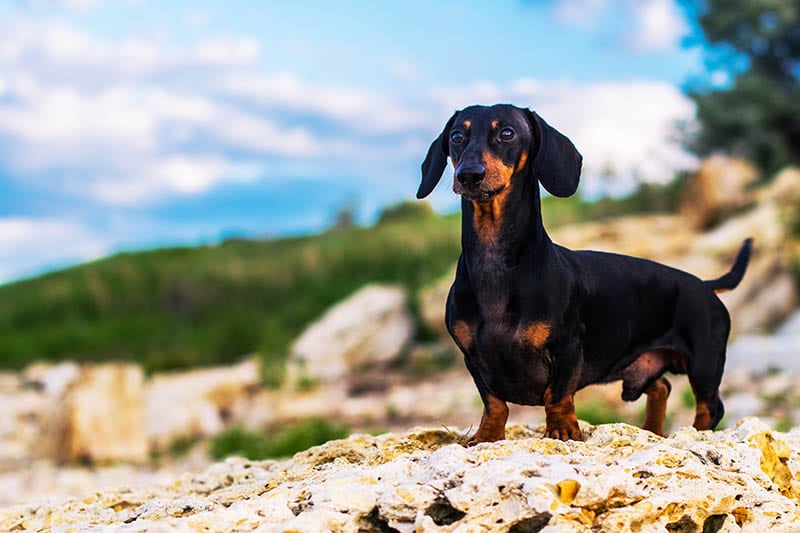
Health & Care
Dachshunds are not particularly high maintenance from a health perspective and are generally healthy little hounds. However, as with many pure-bred dogs, they are prone to certain genetic diseases and health disorders for which their owners should remain discerning.
Because of their long back and short legs, they are prone to spine and knee issues, respectively. Their long backs also mean that care should be taken when picking them up, so as not to “bend” them uncomfortably or painfully.
Due to their breeding for active pursuits, doxies that have a more sedentary lifestyle are particularly prone to obesity. Therefore, it’s important to pay careful attention to their diet and make sure that they are not over-spoiled with treats, though it may be tempting to do so! It’s particularly essential to ensure that a doxie that is prone to pudginess receives its daily exercise.
Breeding & Availability
Dachshunds are purebred dogs that are very popular pets, and they are therefore readily available. The long-haired and wire-haired versions are not as common. Always ensure that you source your new fur baby from a reputable and conscientious breeder.
You might expect to pay anything between $500 and $1500 for your new pup, depending on what kind of doxie you think you might like.
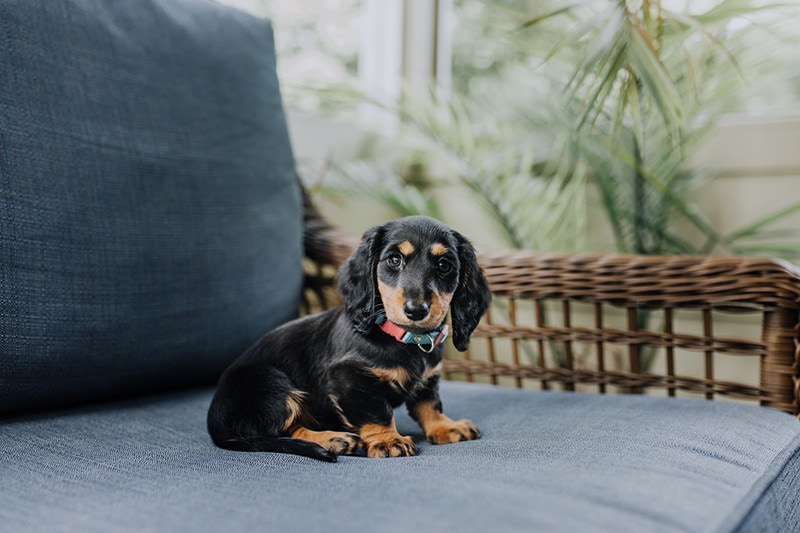
Suitable for:
Due to their small size, Dachshunds are well suited for smaller homes and potentially apartments, although they do need minimal daily exercise and stimulation. They are lively doggies, so they’re probably not the best choice for an elderly or inactive person. Whilst they can make lovely family pets, it’s prudent to be mindful of interactions with small children who may mishandle them, some doggies may become snappy or aggressive.
They will form a devoted connection with their chosen human, so a home with a human who would be equally devoted and attentive would be ideal. They’re not particularly enthralled by the company of other pets—unless it’s a fellow doxie friend—but will tolerate them indifferently.
 Maltipoo Overview
Maltipoo Overview
Maltipoos are a hybrid breed obtained by crossing a Maltese with a Poodle. They are charming little “designer” dogs that have been around for the last 20–30 years, and have oodles of personality and appeal. Their appearance can be quite varied and depends on what kind of Poodle is used to make the cross.
They fit the small dog category, but may seem bigger than they are due to their voluminous coats—which can be curly, scraggy, scruffy, or wavy. Maltipoos of all colors abound and they may also be bicolored or multicolored.
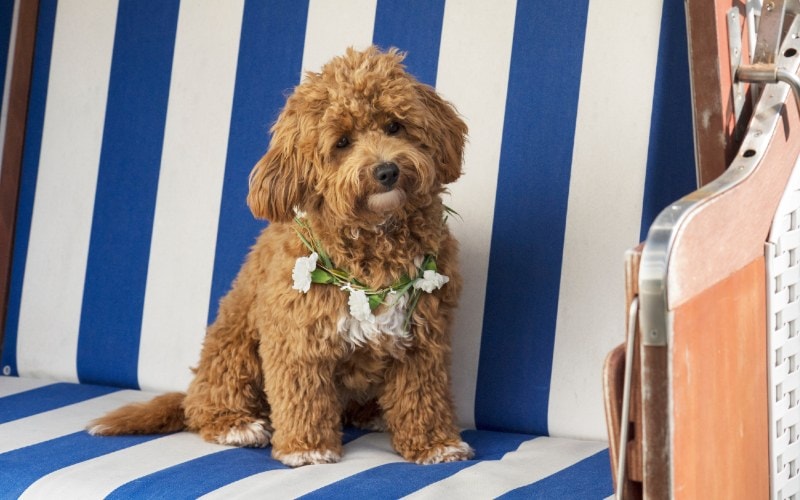
Personality / Character
Multipoos are a delight to be around, particularly neutered males that don’t seem to have a mean bone in their bodies. The breed is renowned for being affectionate, loyal, intelligent, and obedient. These utterly adorable pooches are just as likely to jump into your visitors’ arms for a cuddle as they are yours. They tend to love all humans and other pets alike, and relish playtime with the kids.
Although they are active little doggies, they adapt well to low-energy environments and are very happy to quietly shadow their owner all day.
Particularly the males become quite attached to their humans and do not tolerate being left alone for long periods. In these instances, they are likely to become quite vocal about their distress.
Training & Exercise
Because of their joyful and obliging personalities, Maltipoos are generally easy to train—males even more so with treats as a reward, as they are so food-motivated. Females can be a little moody at times, like many female dogs, so if you catch her on a bad day you might not accomplish much training!
The Maltipoo, although an energetic breed of dog, does not require a huge amount of exercise—30 minutes a day is enough to keep the pooch happy. It would be just as pleased with more, but is not going to have an energy explosion if it doesn’t get a runaround.

Health & Care
As a crossbreed, Maltipoos tend to be less prone to the genetic health conditions that worry so many purebreds. Having said that, there are some conditions that it may inherit from either one of its purebred parents. Owners need to look out for dental problems, patella luxation, and White Shaker Syndrome (especially in white dogs).
Maltipoos are classified as “hypoallergenic” dogs, which means that they are low shedders and seem to have less of an effect on human allergy sufferers than other breeds. Despite having a low-maintenance coat, their mid-length curls or scruff still do require brushing from time to time to keep them comfortable.
These darling little pooches become very attached to their family and many suffer severe separation anxiety when left alone for too long. This will probably manifest as barking, howling, or growling.
Breeding & Availability
Maltipoos are becoming more and more popular as pets, for obvious reasons. They are, therefore, becoming more easily available. Due to the various crosses that exist, you may need to search around a bit before you find a reputable breeder who has the exact Poodle cross that you desire.
You might pay anything from $400 right up to $2,000 for a Maltipoo. The tiny teacup-sized Maltipoos are more expensive due to the intensive cross-breeding they undergo to achieve their diminutive status. Bear in mind that this intensive breeding also, unfortunately, may predispose them to several health conditions.
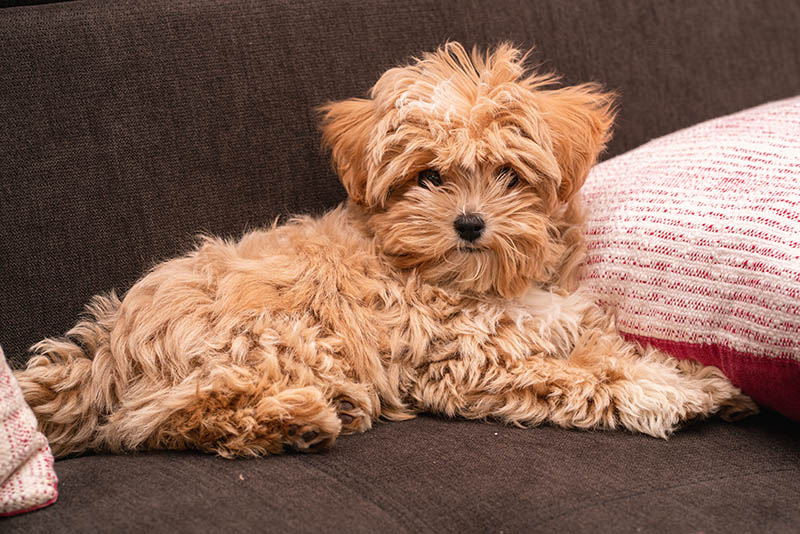
Suitable for:
Maltipoos make wonderful pets for just about any home. They are renowned for their cheerfulness and eager-to-please attitudes. They would be ideally suited as a companion for Granny, but are just as well-suited and happy to be the kids’ favorite playmate.
If you already have other pets, they are likely to accept them happily and fit in harmoniously.
Although they enjoy being active, they are not a breed that will tear the place apart if they don’t get their regular exercise. This makes them particularly suitable for apartment living. Just remember not to leave them alone for too long, as they are sure to become distressed.
 Which Breed Is Right for You?
Which Breed Is Right for You?
So, there you have it. Two equally adorable bundles of cuteness, each with their very own unique temperaments and traits.
A Maltipoo will fit in with just about any household, bearing in mind that they do not like to be left alone. They are a great choice if anyone in the family is an allergy sufferer. They are equally happy with a single elderly owner as they are in a busy, bustling home filled with kids and other pets.
Dachshunds, on the other hand, are a bit more particular. They would be better suited to an active home, rather than one that requires them to lay about all day. They are not always as tolerant of children or other animals, but many show an exception to this observed trait.
If you were on the fence before you started reading, you’re bound to have a better idea now of which of the two breeds will fit in best your home and lifestyle.-
See also:
- Malshi vs Maltipoo – Which One Is Right for You?
- Dachshund Vs. Doxin Vs. Dotson: Key Differences & Facts
Featured Image Credit: Left:Dachshund(Pxfuel); Right: Maltipoo(Irsan Ianushis, Shutterstock)
 Visual Differences
Visual Differences Dachshund Overview
Dachshund Overview

